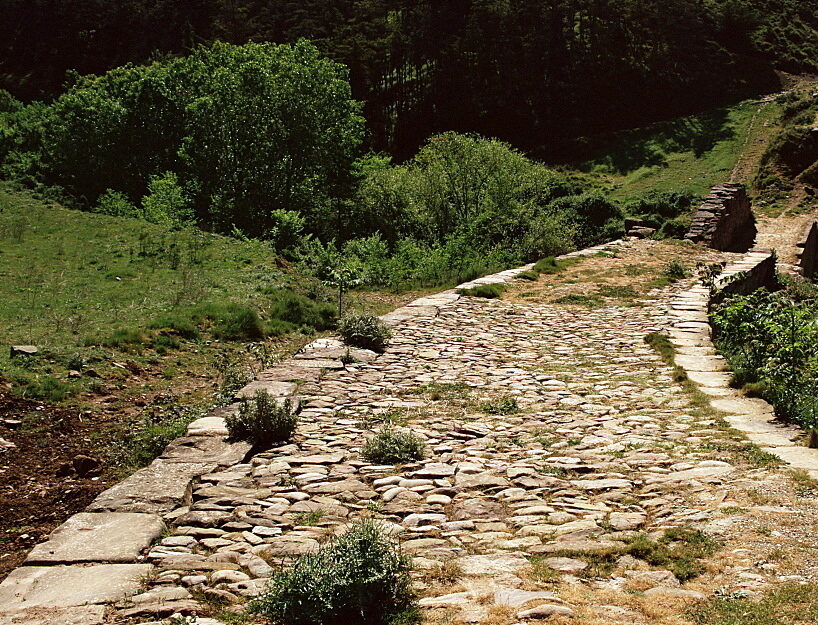Introduction: A Window into Roman Engineering Mastery
The Roman road near Cirauqui, Navarra, in northern Spain, stands as a vivid example of the architectural ingenuity that characterized the Roman Empire. Part of the ancient Via Agrippa, this preserved segment invites admiration for its resilience and functionality, even after thousands of years. Roman roads like this were not just pathways but a cornerstone of imperial power, enabling connectivity and control across vast territories.
The Engineering Behind Roman Roads
1. Multi-layered Construction for Durability
Roman roads were constructed with remarkable precision, employing a multi-layered approach to ensure stability and resistance to wear. The process typically involved:
- Statumen (Foundation Layer): Large, flat stones were laid to provide a stable base.
- Rudus and Nucleus (Middle Layers): Compacted gravel, sand, or crushed stones provided cushioning and drainage.
- Summum Dorsum (Surface Layer): Carefully fitted stone slabs created a durable, smooth surface capable of withstanding heavy traffic.
This method minimized water retention, reduced erosion, and extended the road’s lifespan, demonstrating a deep understanding of materials and terrain.
2. Functional Design Elements
Key features of Roman roads enhanced their utility:
- Curbs: Visible in the Cirauqui section, these served as boundaries, directed water runoff, and added lateral support to the road.
- Cambering: Roads were slightly raised in the center to prevent water pooling.
- Drainage Systems: Integrated channels ensured water flowed away efficiently, protecting the structure from damage.

Strategic Importance of Roman Roads
1. Military and Administrative Efficiency
Roman roads were instrumental in maintaining control over the vast empire. Troops could be deployed swiftly, administrative orders delivered efficiently, and regions managed effectively.
2. Economic and Cultural Connectivity
The roads facilitated trade, allowing goods to move across regions seamlessly. They also enabled cultural exchange, spreading Roman laws, languages, and innovations throughout the empire.
3. Integration with the Via Agrippa
The Via Agrippa was a crucial route in the Roman network, connecting key settlements and ensuring the smooth flow of resources and information. The preserved section at Cirauqui underscores the strategic foresight in planning these roads.
The Road Today: A Testament to Roman Legacy
1. Preservation for Modern Visitors
The Cirauqui segment of the Via Agrippa offers an immersive experience for historians, hikers, and pilgrims. As part of the Camino de Santiago, it combines historical significance with spiritual and cultural heritage.
2. Architectural Inspiration
The enduring quality of Roman roads has influenced modern infrastructure design, from road layering techniques to drainage solutions. This preserved stretch is a tangible link to the engineering principles that continue to shape the modern world.

Lessons from Roman Roads
The Roman road near Cirauqui reminds us of the timeless value of well-planned infrastructure. It highlights how durable design, integration with the natural environment, and attention to detail can create works that endure for millennia. For modern societies, these ancient pathways offer lessons in sustainability, innovation, and the importance of connectivity in fostering growth and resilience.
Conclusion: Walking Through History
The preserved Roman road at Cirauqui is not just an artifact but a symbol of a civilization that valued ingenuity and interconnectedness. Visitors walking this ancient path are stepping into history, tracing the routes that once united an empire. This legacy underscores Rome’s enduring influence on engineering, culture, and society, leaving behind not just roads, but timeless inspiration.

